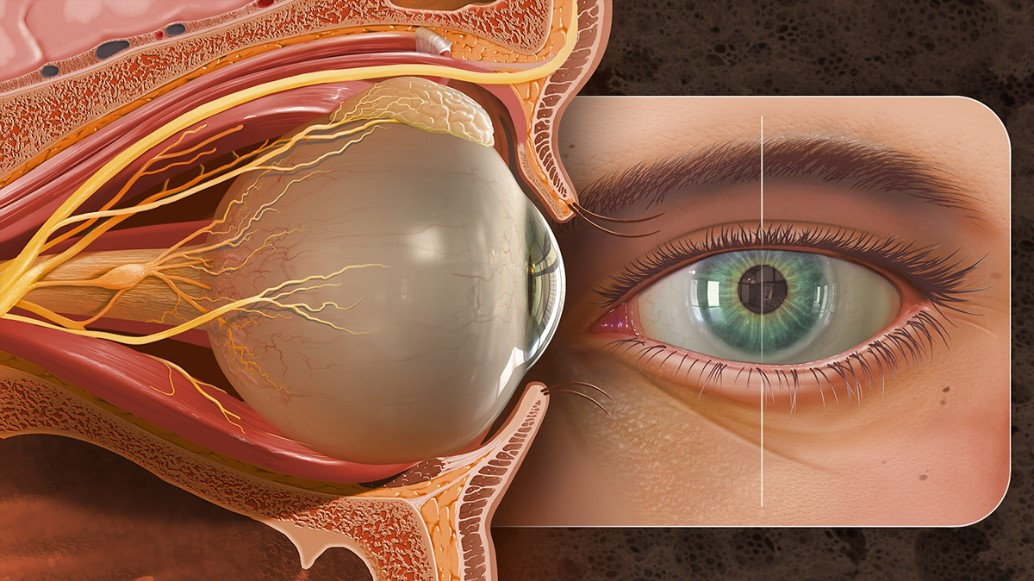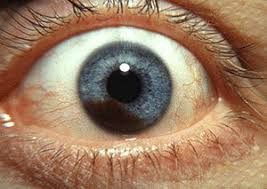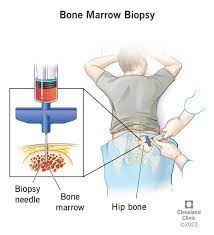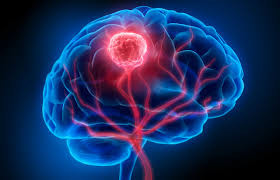Definisi
Karsinoma nasofaring merupakan sebuah bentuk tumor ganas yang terjadi pada tenggorokan, terutama di bagian atas atau belakang hidung. Penyakit ini cukup sering ditemukan di Asia Tenggara, salah satunya Indonesia. Di negara-negara Asia Tenggara, terdapat 25-30 pria dan 15-20 wanita per 100.000 penduduk yang mengalami kondisi ini. Sementara itu, di negara lainnya, penyakit ini dapat terjadi pada 1 orang per 100.000 penduduk.
Penyebab
Kanker ini berasal dari sel epitel pada tenggorokan. Sel epitel merupakan sel terluar yang melindungi organ dan saluran tubuh. Kanker dimulai ketika terjadi perubahan susunan genetik pada sebuah sel, yang disebabkan oleh interaksi antara struktur gen, faktor lingkungan, serta infeksi virus Epstein-Barr virus (EBV). Perubahan susunan genetik ini menyebabkan sel normal bertumbuh dan membelah diri lebih cepat daripada biasanya, bahkan menyerang sel-sel yang sehat di sekitarnya atau organ-organ tubuh yang letaknya cukup jauh. Organ tubuh yang cukup jauh dapat mengalami kanker karena sel ini dapat terbawa oleh aliran darah.
Faktor Risiko
Beberapa faktor risiko yang dapat mempengaruhi kejadian karsinoma nasofaring adalah sebagai berikut:
- Jenis kelamin. Karsinoma nasofaring lebih sering terjadi pada laki-laki daripada perempuan
- Ras. Kanker ini paling banyak menyerang orang di Cina, Asia Tenggara, dan Afrika Utara. Tidak hanya itu, kanker ini juga lebih sering terjadi pada keturunan Asia (meskipun tidak tinggal di Asia), serta suku Inuit di Alaska, yang masih termasuk dalam ras Mongoloid
- Usia. Kanker ini dapat terjadi pada seluruh usia, namun paling sering terdiagnosis pada usia 30-50 tahun
- Makanan yang diawetkan dengan garam. Bahan kimia yang dilepaskan saat merebus makanan yang diawetkan dengan garam (seperti ikan dan sayuran) dapat masuk ke rongga hidung dan meningkatkan risiko karsinoma nasofaring. Paparan bahan kimia sejak kecil juga meningkatkan risiko lebih jauh lagi
- Virus Epstein-Barr. Virus ini berada di mana-mana, dan biasanya hanya menyebabkan gejala ringan, seperti selesma (common cold). Pada keadaan tertentu, virus ini dapat menyebabkan mononukleosis infeksius, yang dapat ditandai dengan rasa lelah berlebihan, demam, radang tenggorokan, nyeri kepala dan otot, pembengkakan kelenjar getah bening pada leher dan ketiak, pembengkakan hati dan/atau limpa, serta ruam. Pada keadaan lainnya, virus ini dapat menyebabkan beberapa jenis kanker, salah satunya karsinoma nasofaring
- Riwayat keluarga. Jika ada keluarga Anda yang menderita karsinoma nasofaring, risiko Anda mengalami penyakit ini menjadi lebih tinggi
- Alkohol dan tembakau. Konsumsi alkohol dan tembakau dalam jumlah tinggi dapat meningkatkan risiko kanker ini
Gejala
Gejala karsinoma nasofaring dapat bervariasi sesuai dengan daerah yang terkena:
- Gejala hidung: rasa hidung tersumbat, keluar darah atau cairan berdarah dari hidung, sensasi cairan mengalir di belakang hidung, suara sengau, serta kakosmia (sensasi mencium bau busuk terus-menerus)
- Gejala telinga: gejala ini terjadi karena adanya sumbatan pada saluran yang menghubungan liang telinga dengan rongga hidung, misalnya penurunan pendengaran, rasa penuh di telinga, serta telinga berdenging
- Gejala saraf: Perluasan kanker ke dalam kepala dapat terjadi. Gejala akan tergantung dari saraf yang terkena, namun yang paling sering terjadi adalah kesulitan menggerakkan bola mata
- Gejala terkait kelenjar getah bening: pembesaran kelenjar getah bening, terutama pada daerah leher. Apabila pembesaran kelenjar getah bening telah mencapai dekat bahu, penyakit telah menyebar lebih lanjut
- Gejala terkait penyebaran kanker (metastasis): yang tersering adalah penyebaran ke paru-paru dan hati
Diagnosis
Diagnosis karsinoma nasofaring seringkali terlewatkan karena gejalanya yang mirip dengan kondisi lain, seperti infeksi pada telinga. Biasanya, karsinoma nasofaring akan terdiagnosis setelah melibatkan kelenjar getah bening pada leher. Dokter dapat melakukan pemeriksaan secara langsung untuk mengetahui kondisi pada telinga, hidung, dan tenggorokan. Jika Anda berobat ke dokter umum, dokter dapat merujuk Anda ke spesialis telinga, hidung, dan tenggorokan (THT) untuk pemeriksaan dan terapi lebih lanjut.
Dokter dapat melakukan tes laboratorium dasar seperti darah lengkap, fungsi hati dan ginjal, serta kadar antibodi IgA (bagian dari kekebalan tubuh). Selain itu, pemeriksaan dapat berupa pencitraan, yang pada umumnya dilakukan di fasilitas kesehatan yang cukup besar. Pemeriksaan ini dapat berupa computed tomography scan (CT scan) yang dapat menunjukkan perluasan kanker ke tulang dan magnetic resonance imaging (MRI) yang dapat menunjukkan perluasan kanker ke otot dan kelenjar getah bening sekitarnya. Pemeriksaan dengan positron emission tomography scan (PET scan) juga dapat dilakukan untuk melihat pemulihan dan munculnya kanker kembali, namun fasilitas ini jarang sekali tersedia di Indonesia.
Dokter juga dapat melakukan pemeriksaan endoskopi, yaitu memasukkan selang dengan kamera kecil di ujungnya ke dalam rongga hidung, untuk melihat besar tumor dan mengambil sampel untuk dilihat di bawah mikroskop. Pemeriksaan sampel jaringan ini disebut sebagai histopatologi, dan dapat membantu dokter mengetahui jenis, asal, dan derajat keparahan sel kanker untuk menentukan terapi.
Tata Laksana
Terapi karsinoma nasofaring yang utama adalah radioterapi. Radioterapi merupakan sebuah terapi yang menggunakan radiasi dosis tinggi untuk menghancurkan sel-sel kanker. Jika kanker terlalu parah, dokter dapat mempertimbangkan penggunaan kemoterapi. Kemoterapi merupakan terapi kanker menggunakan obat-obatan. Sama seperti radioterapi, tujuan kemoterapi adalah menghancurkan sel-sel kanker.
Pembedahan dapat menjadi pilihan terapi pada stadium awal kanker atau dengan pertimbangan tertentu. Tujuan pembedahan adalah mengangkat jaringan atau kelenjar getah bening yang telah dipenuhi dengan sel-sel kanker. Pembedahan dapat dilakukan bersamaan dengan radioterapi.
Salah satu efek samping radioterapi adalah terjadinya peradangan pada lapisan dalam mulut. Hal ini dapat menyebabkan nyeri, kesulitan mengunyah, dan kesulitan menelan. Pada masa ini, Anda dapat mengonsumsi makanan-makanan lembut seperti milkshake, kentang tumbuk (mashed potato), dan daging yang dicincang. Sementara itu, makanan asam, pedas, asin, dan kasar tidak disarankan karena dapat memperparah peradangan tersebut. Sebagai alternatif, dokter dapat memasangkan selang makan langsung ke lambung agar kebutuhan cairan dan kalori pasien tercukupi.
Dalam proses terapi karsinoma nasofaring, Anda dapat berisiko tinggi cedera apabila beraktivitas terlalu berat. Oleh karena itu, aktivitas berat dan olahraga yang melibatkan kontak fisik antarpemain perlu dibatasi.
Komplikasi
Komplikasi karsinoma nasofaring dapat berupa:
- Kanker yang dapat menyerang sel-sel sehat di sekitarnya. Pada stadium lanjut, kanker ini dapat menyerang tenggorokan bagian bawah, tulang, dan otak
- Kanker yang menyebar ke bagian tubuh lainnya. Sebagian besar penderita kanker nasofaring mengalami penyebaran kanker ke daerah sekitar tenggorokan, misalnya pada kelenjar getah bening. Bagian tubuh lainnya yang sering diserang oleh kanker ini dapat berupa tulang, paru, dan hati
- Otitis media efusi. Kondisi ini merupakan peradangan telinga tengah yang disebabkan oleh penumpukan cairan. Kondisi ini dapat terjadi apabila kanker menutupi saluran Eustachius, saluran yang menghubungkan telinga tengah dengan rongga hidung dan tenggorokan
Pencegahan
Karsinoma nasofaring cukup sulit untuk dicegah. Namun, jika Anda khawatir terhadap risiko Anda mengalami kanker ini, Anda dapat menghindari hal-hal yang meningkatkan risiko Anda. Misalnya, Anda dapat mengurangi atau bahkan menghindari konsumsi makanan yang diawetkan dengan garam, alkohol, dan tembakau (misalnya rokok). Anda juga dapat meminta skrining virus Epstein-Barr jika fasilitas tersedia.
Kapan Harus ke Dokter?
Gejala awal karsinoma nasofaring pada umumnya tidak menyebabkan kekhawatiran berlebih. Namun, jika Anda merasakan perubahan pada tubuh Anda, seperti hidung tersumbat, mimisan, dan infeksi telinga terus-menerus, Anda dapat berkonsultasi dengan dokter. Jika Anda berobat ke dokter umum, dokter akan melakukan pemeriksaan awal sebelum merujuk Anda ke spesialis yang dapat membantu Anda menentukan terapi.
Mau tahu informasi seputar penyakit lainnya, cek di sini ya!
- dr Anita Larasati Priyono
- dr. Monica Salim
About Mono (Infectious Mononucleosis) | CDC. (2020). Retrieved 9 March 2022, from https://www.cdc.gov/epstein-barr/about-mono.html
Nasopharyngeal carcinoma - Symptoms and causes. (2020). Retrieved 9 March 2022, from https://www.mayoclinic.org/diseases-conditions/nasopharyngeal-carcinoma/symptoms-causes/syc-20375529
Paulino, A. (2021). Nasopharyngeal Cancer: Practice Essentials, Pathophysiology, Epidemiology. Retrieved 9 March 2022, from https://emedicine.medscape.com/article/988165-overview
Shah, A., Zulfiqar, H., & Nagalli, S. (2022). Nasopharyngeal Carcinoma. Retrieved 9 March 2022, from https://www.ncbi.nlm.nih.gov/books/NBK554588/











